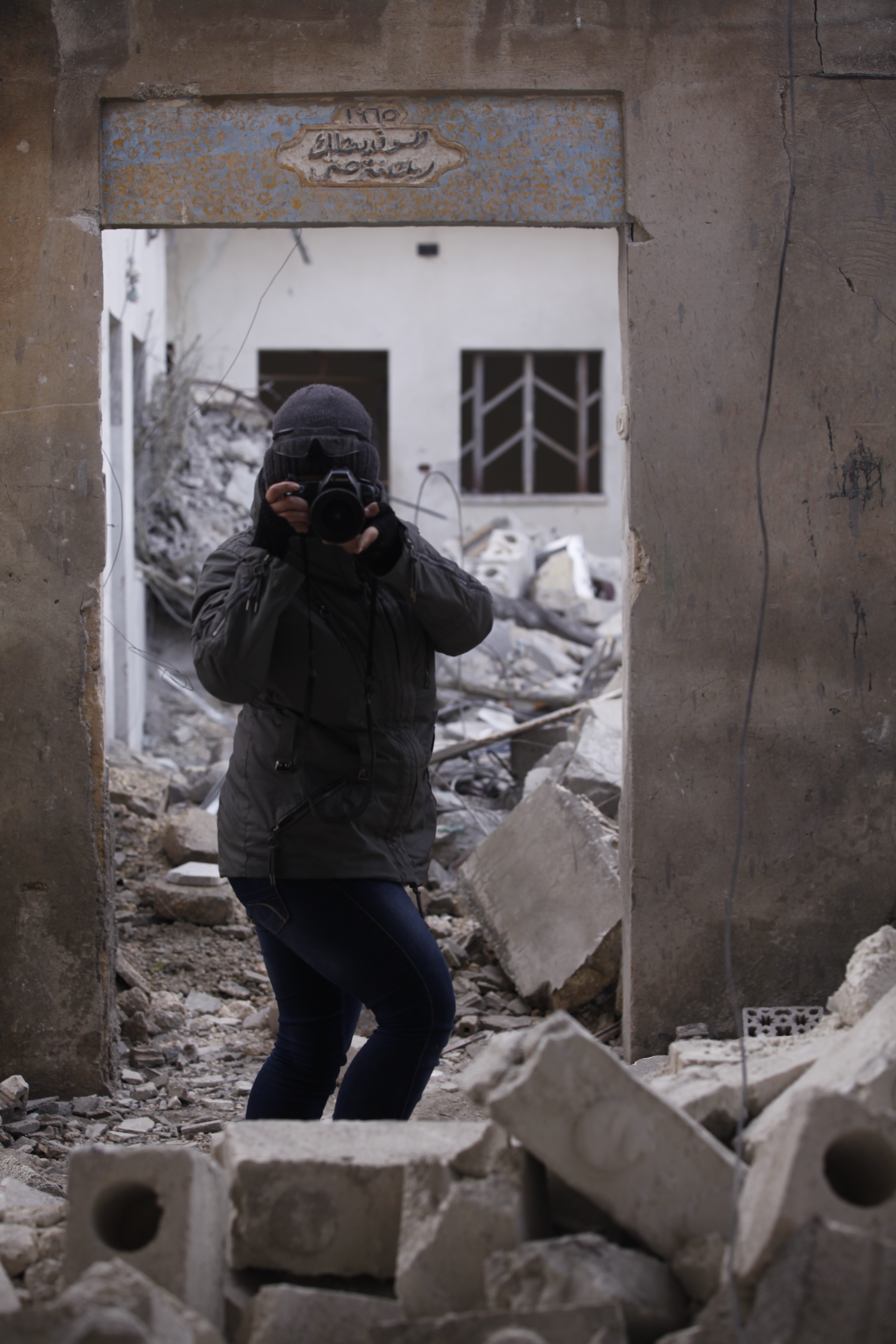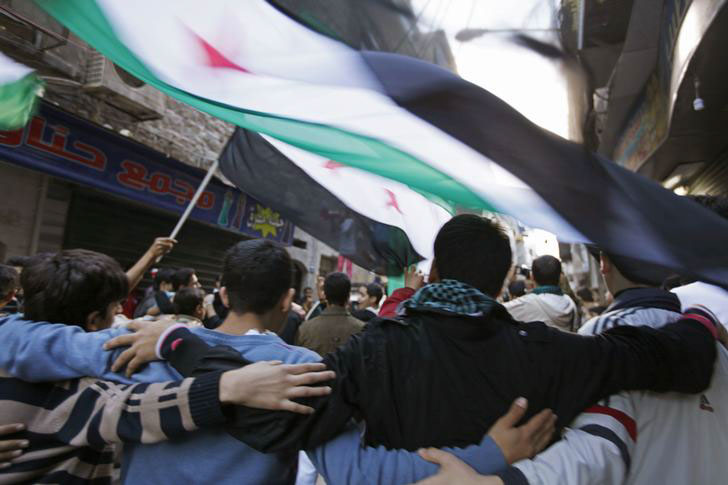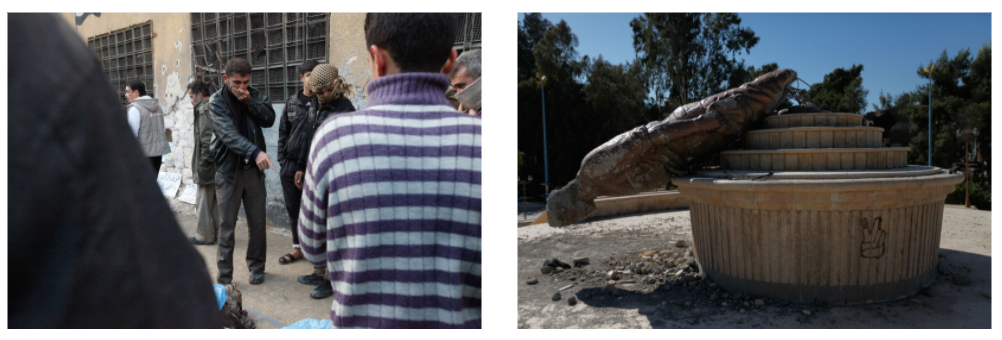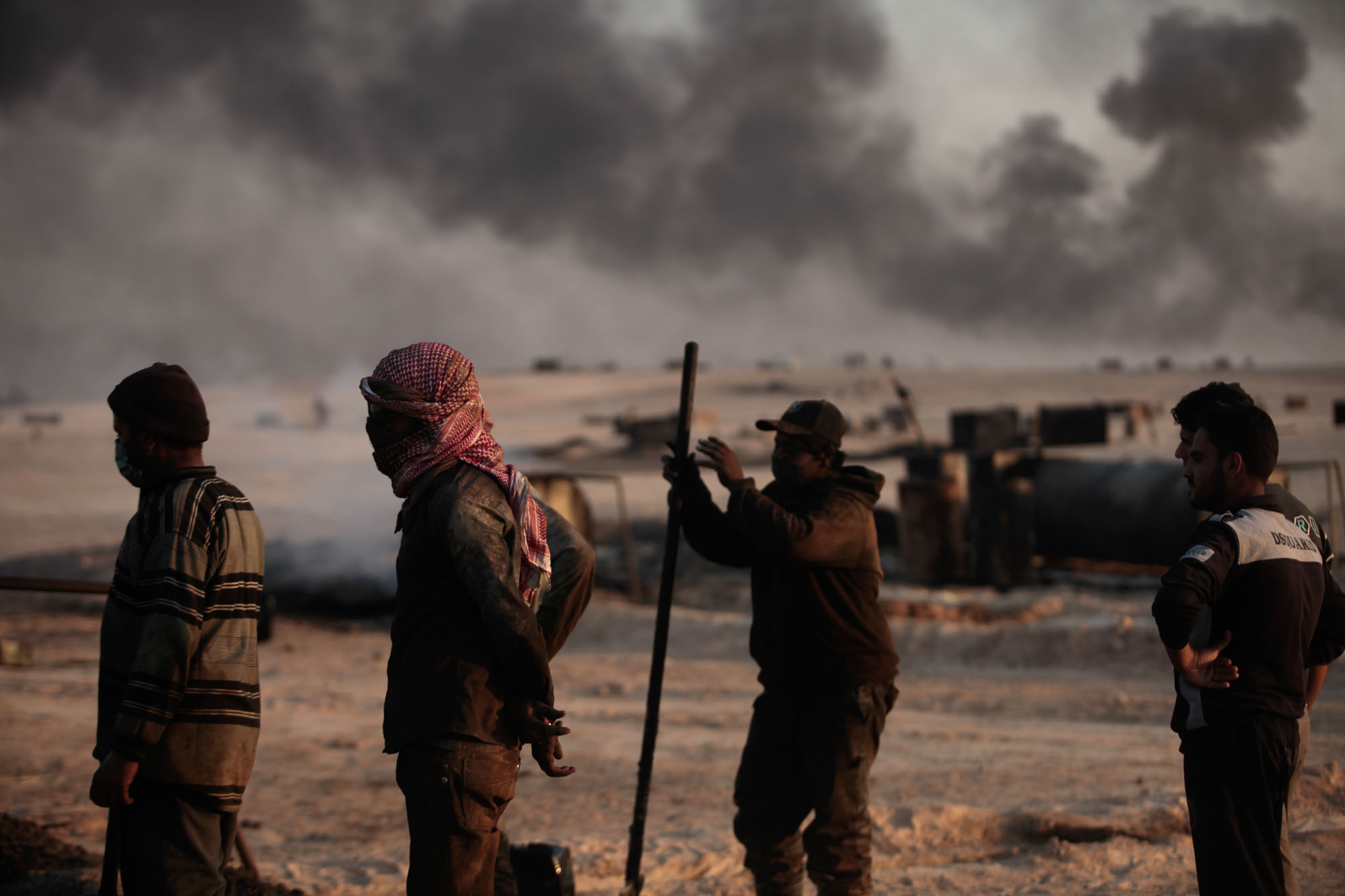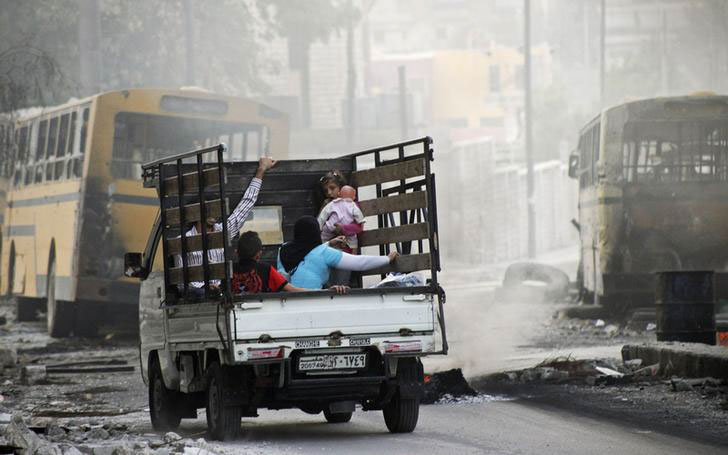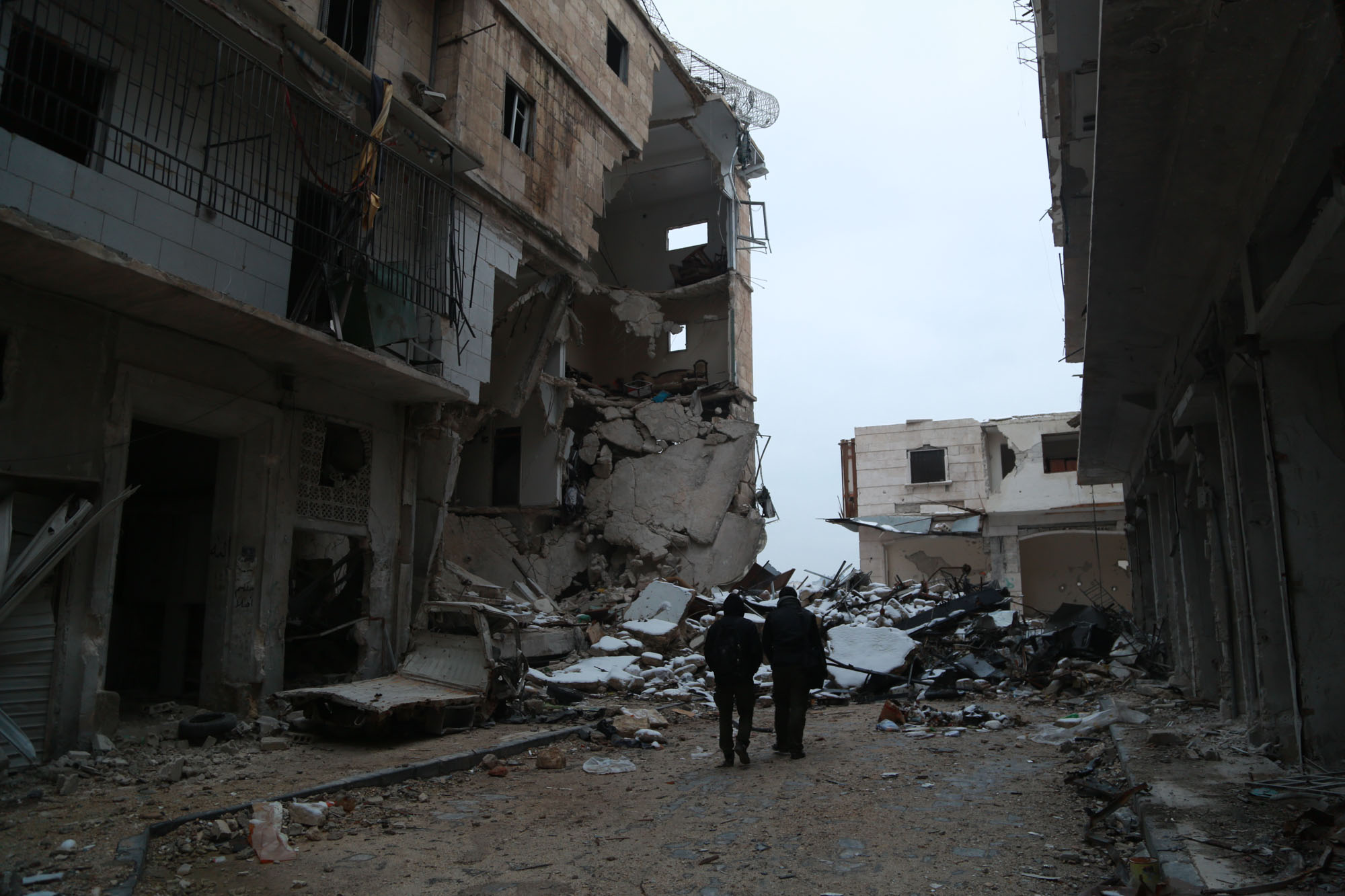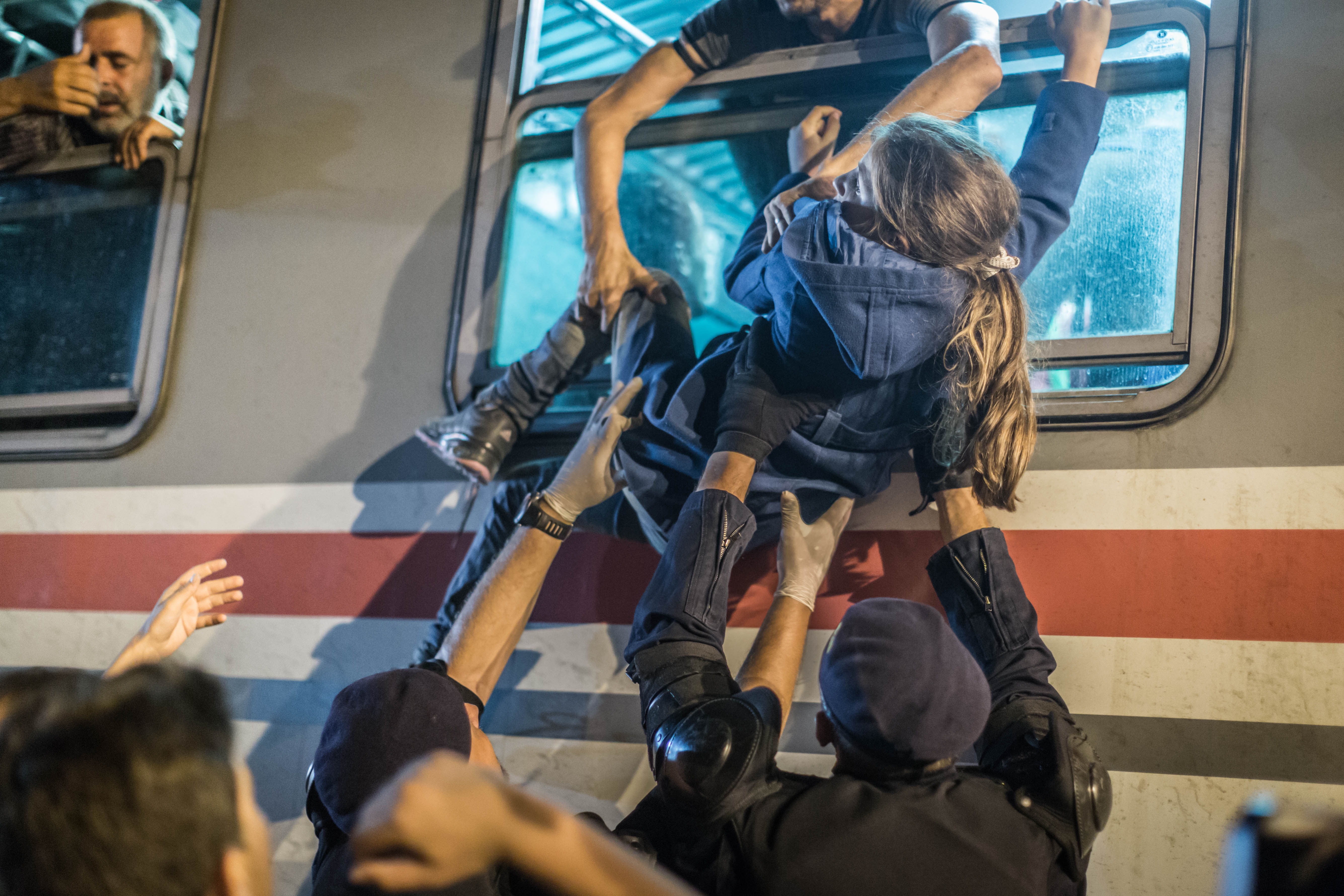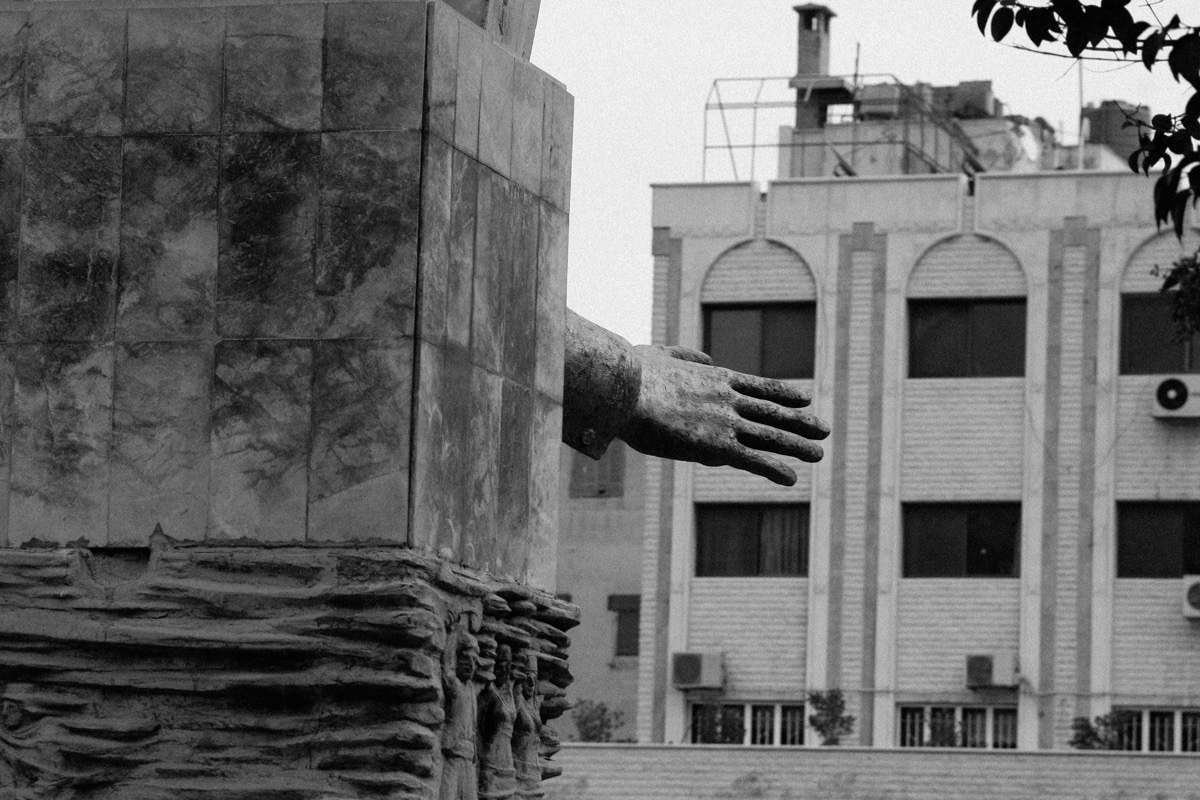This article is part of SyriaInFocus, a series on Syrian photography funded by the Friedrich Naumann Foundation for Freedom, with guest editor Sima Diab.
My intention in photography was to document the existence of events or actions and the people most affected. I wanted Syrians on the other side of my city to see.
I felt every picture before pressing the shutter. I often wonder about the destiny of the people in my photographs. Places, like people, have souls, and each bombed-out house or building is full of the stories of those who were living or working there. Maybe they died there and maybe they escaped. It is the soul I try to hold onto through a photograph.
In 2011, protests spread in some Syrian cities against the injustice of the government. So spread debates and divisions in society. The reality that the government's national media broadcasted was different from the one I saw as a protester.
At first, there was denial that protests happened, as the government accused protesters of accepting bribes to disturb the country. Then, a denial of the brutality and violence that the state-sponsored “shabiha” thugs, security forces and the army employed to oppress the protests at any costs. Later the media adopted the speech of nationalism that emphasized patriotism and portrayed opposing the regime as an act of treason.
In 2012, the Free Syrian Army took over locations in my city, Aleppo. I moved to the other side, fearing the arrest campaign that the government launched earlier that year against people with opposing views.
Always on the move
At first, I used the pseudonym Zain Karam to protect my family until they left the regime-controlled areas.
In the beginning, no one stopped me from taking photographs. I first moved to Bustan al-Qasr. I lived for a while with a family there, whom I got to know through protests in the streets.
The nonviolent phase followed: flowers, flyers, peaceful. All those milestones had been walked and yet were faced with total brutality. Remembering protests became an important phase of defining what was happening in Syria. Also, the fact that the protests kept taking place in opposition-held areas.
On 29 January 2013, I received a call from Reuters’ Beirut office to cover a massacre. The Syrian regime had dumped the bodies of more than 200 people whom they detained and killed (some of whom were announced missing) in the Quaiq river, allowing the water to carry them to rebel-held areas of the city. I went to photograph the bodies, which were laying on the ground of a schoolyard. Masses of people came in to identify their relatives. The odor of death was strong. Handcuffed, the bodies showed signs of execution, and were in different stages of decay.
Life and death existed side by side in the city’s streets and neighborhoods. Nothing stayed the same; everything was changing. The faces that you saw every day might not be there the next morning. The streets you were walking might be wiped out in a second. You could never predict when it would happen.
When I visited Raqqa for the first time, in 2013, it was under opposition control. Compared to Aleppo, it was much more alive. The streets and shops were full of people. Airstrikes would occur, but not in the same intensity as Aleppo.
There, I met a group of activists from Haquna - Our Right, a grassroots rights awareness organization. I got some sense of Raqqa during my stay with them. In a country whose image has been censored and oppressed, the sanctity of the immortal president had been broken and it was no longer a taboo to speak against him.
I was amazed by the fact that I had never met those dominant authoritarian figures in person, and still they had an immense impact on my life.
In the end, some of the activists became refugees and some friends were arrested and kidnapped by the Islamic State and never heard from again.
The Black Land
The economy suffers in war, most of all for civilians. In al-Mansoura, a town near Raqqa, many residents started to process and refine crude oil manually. It was an open field. Many people of all ages worked in groups. It can suddenly explode when something goes wrong. The crude oil is heated in a big container until gas comes out, which then condenses in cooling water tanks. Workers extract the diesel and benzine for heating, as well as running vehicles and generators.
This process had long-term risks on the environment and for people working the oil fields. Many suffered burns, lung disease and even death.
I am not only the photographer. I am also the subject.
It was difficult to live under airstrikes and shelling. I was always afraid whenever I stayed home that I’d be buried under rubble after an airstrike and no one would come and rescue me because they didn't know I was there.
I lived with my husband in his neighborhood. We moved often, staying in a lot of different houses in the city, the countryside and even Turkey. Our house was destroyed by a barrel bomb. It was one of those days we didn't sleep at home. The next day we went there with a friend. It seemed to be at the other end of the world. I took the photograph.
Being a local female photographer in a hostile environment wasn't easy. Once the Free Syrian Army suspected me of being a spy for the regime, accusing me of leaking images of leaders' meetings to the regime even though I never attended one. I was also wanted by the regime for believing in freedom of expression and documenting the other side.
It kept getting harder for me to take photos as the complexity of war and military divisions increased on the ground. The presence of extremists added an extra dimension to the conflict.
I had support from many colleagues and male friends, but it was hard to move freely and take photographs. Extremists and fighters approached them many times (including my husband) to discuss my presence and what I was wearing. I felt I had become a burden and didn't want to be responsible for putting people at risk so that I could work. I hated that time.
I respect human rights and freedom of expression. But counter-narratives can have fatal consequences.
My first conversations about Syria in Europe took me back to the beginning in 2011.
In small dialogues with people in Germany, I learned that some people didn't know that protesters were shot at with live ammunition and mortar shells, or thought the whole cities were destroyed. But there were also people celebrating the victory of the regime in restoring the cities, celebrating color festivals and posing for their wedding photographs in front of the destroyed buildings. It seemed complicated for readers to follow the news.
Some asylum seekers in Germany decided to simplify the narrative and fit the story within the mood and regulations of the hosting countries. They used to blame IS as a reason for escaping the country. I guess the fear of IS is something that you don't have to explain or negotiate about. It is a fear the West can understand. IS worked to export its own image. As did the regime, aided by Russia. They pushed an image of Syria as a suitable place for tourism. The use of internet influencers willing to support that claim, plus the presence of a Syrian in AfD advocating for refugees to return to a “safe” Syria was followed recently with a conference ostensibly inviting refugees to return and build the country.
Supporting citizen journalists in the creation of Syria’s narrative is the right thing to do. That is the empowerment needed when we can't publish on our own official channels.
One can't help but wonder.
When the talk about Syria is no longer page one internationally, and the story shifts to a one of a refugee crisis.
When photos from Caesar and chemical attacks and testimonies of survivors do not attract enough of a response to change the Syrian reality, due to current world politics.
Then let us imagine the consequences of the continued absence of such evidence, in contrast to the images that the Syrian government, Russia and extremists portray of the country.
The war and injustices are still going on; we can't yet determine whether photos were successful in delivering a narrative that explains Syria.


